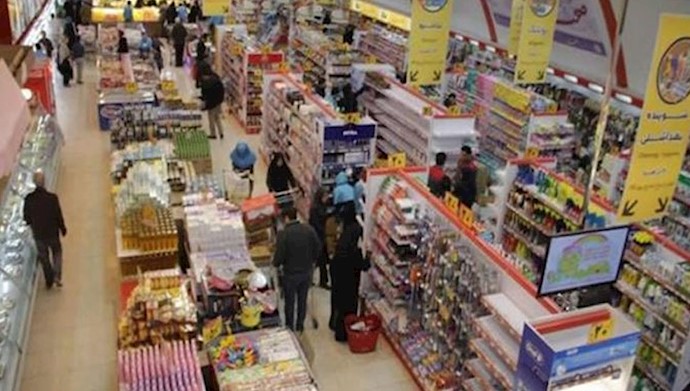Analysis by PMOI/MEK
May 14, 2019 – On May 4, the state-run newspaper Asr-e Iran wrote about the significant increase in prices of consumer goods.
“Now, we are facing an unrestrained economic instability and fear about the future. Prices are almost unimaginable. It appears that all of it is a horrifying nightmare and will end when you wake up. However, we all know that what is described as a nightmare is the hard truth,” the piece reads in part.
A few days earlier on May Day, Eghtesasd 24, an Iranian state-run website specialized in economic news, wrote about the current economic misery worker families face.
“The inflation that especially in the past two years has bent the back of working-class families isn’t limited to increases in red meat prices. Prices of fruit, vegetables and especially products like onions and potatoes that are the main ingredient of the daily food of working-class families have increased to such an extent that you can safely say that workers and their families are craving for fruits for a long time,” the article reads.
On May 6, state-run Vatan Emrooz newspaper, wrote: “The cost of food is far higher than in other countries. Right now, no more 42,000 rial U.S. currency is dedicated to importing beans and its cost has increased by 100 percent. Special currency for importing butter and meat are also dropped, the government hasn’t presented an alternative and subsidies are not provided for the people either.”
In Iran, U.S. dollars are bought and sold at two rates: the official rate is set by the state and the free market rate that changes based on on-the-ground market conditions.
While the state-set rate for one U.S. dollar is set at 42,000 Iranian rials, the free market price is around 150,000 rials.
The Iranian regime should be providing US dollars at state-set prices for special purposes such as importing raw materials for factories or essential consumer goods and thus effectively controlling inflation and domestic prices.
However, what happens, in reality, is an outrageous story of blatant corruption, nepotism, and kleptocracy where US dollars at state-set prices are handed out to the well-connected elite who make huge profits at the expense of ordinary Iranians.
On May 6, the Tabnak website published an article titled, “Brokers profited 200 thousand billion tomans from ‘Jahangiri’s currency’.” A toman is equal to 10 rials.
Eshaq Jahangiri, Iran’s First Vice President, famously set and announced the current official exchange rate for the U.S. dollar, so, in current Persian parlance, “Jahangiri’s currency” means USDs at the 42,000 rial rate.
Considering that calculated with the free market rate, 200 thousand billion tomans roughly equal more than $13 billion.
Tabnak writes: “In [the Persian] year 2018-2019, $20 billion have been given to different institutions at the [state-set] rate of 42,000 rials. If you calculate the price at the free market rate, the difference is about 200 thousand billion tomans. That’s while the damage of last month’s huge flood has been calculated at 35 thousand billion tomans.”
Keyhan newspaper, the mouthpiece of Iranian Supreme Leader Ali Khamenei’s, writes: “A few weeks after the JCPOA was implemented, Mohammad Bagher Nobakht [then-spokesperson for the Iranian government] announced that $100 billion Iranian frozen money has been released. Although, government officials later and in a questionable move very much decreased the amount of this money, the main question remains about where this huge amount has been spent that no government official has said anything about it?”
In another admission about the blatant corruption in the Islamic Republic and how just a tiny portion of Iran’s none-oil export revenue is returned to the country, state-run news agency ISNA wrote a damning report on March 4.
“From the $40 billion of exports that the country had in the 11 months of this year, only $8 billion returned to the country.”
Meanwhile, prices of the most basic food products are skyrocketing.
The IRNA news agency reported on May 1 that after a 459.5 percent increase in its prices, onions are the record holder among food products.





